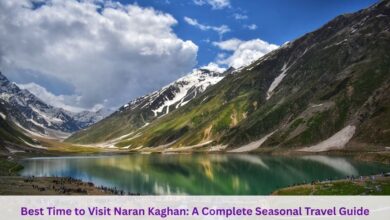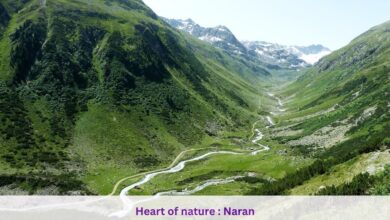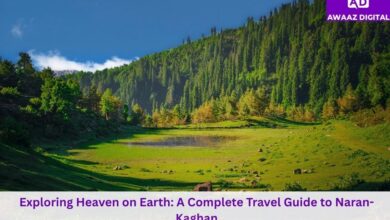Climate Change Changing Attractiveness of Popular Travel Destination

Climate change is an urgent reality altering the most loved travel destinations on Earth, not some far-off threat. Unquestionably, melting glaciers of Patagonia as well as the Great Barrier Reef are being caused by global warming. This paper looks at the larger effects on the travel industry as well as how well-known tourist locations all around are being affected by climate change.
1. Global phenomena: melting glaciers
Under the Perito Moreno Glacier, Argentina
Thought of as a steady glacier, Argentina’s Perito Moreno is starting to show quick retreat. Over the past five years it has lost one to two metres of water equivalent annually. Experts attribute rising regional temperatures and declining precipitation on declining snow accumulation needed for the glacier’s survival. Scientists warn that this faster melting might cause this once-important tourist destination to disappear at last.
Himalayan glaciers, Nepal
Often referred to as the “Third Pole,” the Himalayan mountains are losing many glaciers. With many of these glaciers hosted in Nepal, faster melting of these glaciers increases flood, avalanche, and landsliding risk. Rising concerns about floods, avalanches, and landslides, scientists warn that global warming could cause up to 80% of Himalayan glaciers to disappear.
2. Disaster on Coral Reefs
The Great Barrier Reef in Australia
Rising sea temperatures are bringing hitherto unheard-of coral bleaching events on the Great Barrier Reef, a UNESCO World Heritage site. Starting in 1995, almost half of its coral cover disappeared. These bleaching events brought on by marine heat waves have negative ecological effects for reef communities and increase disease susceptibility in corals.
The Maldives
Rising sea levels threaten the Maldives, the tropical paradise with perfect beaches and coral reefs. The nation’s tourism industry faces existential challenges given projections showing 77% of its territory could be underwater by 2100. This has motivated the government to investigate greener travel options and support initiatives toward climate resilience.
3. Coastal Sites Sweetheart for Rising Waters
Venice, an Italian city
Venice is sinking shockingly fast with its well-known canals and historic buildings. Rising sea levels and more often occurring “acqua alta” (high water) events compromise the infrastructure and cultural legacy of the city. Experts warn that despite projects like the MOSE flood barrier project, Venice’s future is yet unknown.
The Dead Sea, Israel or Jordan
Famous for its healing waters, the Dead Sea is rapidly becoming smaller. Losing up to four feet annually, the fall is blamed on climate change and human activity including water source diversion. If current patterns continue, experts predict that by 2025 it could be completely dry.
4. Mountain locations losing their alliteration
Mount Tanzanian Kilimanjaro
Mount Kilimanjaro, Africa’s highest mountain, is losing its well-known glaciers shockingly rapidly. Studies show that 85% of its ice cover has disappeared between 1912 and now. Should current climatic conditions continue, the remaining ice could vanish in a few decades, so influencing local ecosystems as well as tourism.
The Mountains, Europe
Rising temperatures are driving less snowfall and shorter ski seasons in the Alps, a hub for winter travel. This has generated artificial snowmaking investment as well as diversification of tourism offers and financial challenges for ski resorts.
5. Urban Target Sites Under Pressure
Scottish National
Since Scotland is experiencing shockingly warm and dry conditions, it is leading the way in the climate crisis. Forecasts of west Highland temperatures show them above those in Marrakesh, at 25°C. Just 3% of the normal monthly average, the country has only seen 2.9mm of rainfall in May so far; almost historic lows last recorded in 1859. Responding to this extreme dryness, the Scottish Environment Protection Agency (Sepa) has issued water shortage warnings for half of the river catchments around the country.
Rio de Janeiro, Brasilago.
Rio de Janeiro, well-known for its vibrant culture and amazing coastlines, faces difficulties from rising sea levels and higher temperatures. Forecasts indicate that, considering climate change, the city might be most negatively affected in South America, hence affecting its tourism industry.
Rapa Nui from Easter Island, Chile
Rising sea levels and more storm activity threaten the well-known moai figures on Easter Island. Climate-driven weather events combined with coastal erosion compromises the preservation of this UNESCO World Heritage site.
Mesa Verde National Park, United States
Rising wildfires and resulting flash floods endanger Mesa Verde, home of almost 4,500 archeological sites including cliff houses. These changes in the surroundings influence travel and compromise the preservation of cultural legacy.
7. Consequences of Travel Industry Economics
With trillion of income annually, the travel sector is a big participant in the world economy. Still, climate change causes direct as well as indirect financial challenges.
Comprising more than 10% of the world’s GDP and creating more than 600 million jobs worldwide, the travel sector is especially sensitive to the effects of climate change. Many economic consequences follow from environmental changes disturbing infrastructure, ecosystems, and travel patterns:
A. Revenue Reduction
Particularly in coastal towns and small island nations, economies dependent on tourism suffer significant losses. Whether coral reefs bleach, beaches erode, or snowfall declines visitor counts drop, so influencing hotel, tour operator, local business, and government income. To be quite honest:
Rising hurricane intensity and coastal damage have led more frequent closures and cancelements in the Caribbean, where tourism makes up up to 40% of GDP in some countries.
Significant losses in Switzerland’s ski industry have resulted in synthetic snow and off-season travel investments meant to maintain viability.
B. Adjusting Insurance and Maintenance Costs
Rising sea levels, flooding, and storms call for more funds on defensive infrastructure. Flood barriers, strengthened buildings, water treatment systems, and emergency response plans are among the always improving items. This drives running costs for national parks, historical sites, and resorts.
C. Social Consequences and Job Losses
From a decline in visitor count, job losses in hotels, transportation, and services follow straight forwardly. Sometimes communities depending on seasonal tourism have few options, which causes social discontent, more poverty, and economic migration.
8. Changes in Travel Behavior Driven by Environment
Travelers start altering their plans when places lose appeal or safety due to extreme storms. This has produced rather definite behavioral patterns:
A. Go toward “Climate-Safe” sites.
Demand is growing in places less affected by climate change—or those actively following strategies for climate adaptation. As an example:
Summer travel there is driven by longer daylight hours and milder temperatures in Scandinavia.
People fleeing western U.S. wildfire-prone terrain are flocking to Canada’s national parks.
B. Growing appeal for “Last-Chance Tourism
Travel to see sites before they disappear is “last-chance tourism,” an ironic and unsustainable trend. Examples are in: seeing the Great Barrier Reef before more events of bleaching.
Trekking to glaciers blanketed in Mount Kilimanjaro or the Swiss Alps before they vanish
While this boosts short-term income, overtourism usually accelerates environmental damage.
C. Increasing Environmental Conscious Travel:
Growing knowledge of climate change has driven demand for travel that is ecologically benign. Those looking for travel are:
Carbon-neutral eco-lodges and hotels exist.
Choices for slow travel include rail instead of plane.Encounters with community-based tourism supporting surrounding livelihoods or wildlife conservation.
9. The adaptation of tourism and mitigating techniques
Notwithstanding the challenges, the travel sector is aggressively developing adaption and mitigating strategies to offset consequences of climate change:
A. Government Interventions and Policies
Many countries and local governments are creating tourism plans including climate resilience:
The Netherlands has spent years funding adaptive coastal infrastructure and sustainable urban design.
Bhutan caps visitor count with “high-value, low-impact” tourism to protect its fragile ecosystems.
Projects involving reef restoration and education funding Australia is helping to slow down the Great Barrier Reef’s disintegration.
B. Innovation in Environmental Technology
Travel agents and hotels are embracing green technologies:
Solar and wind renewable energy to run resorts.
Graywater systems and water-saving irrigation.
Mobility of electric vehicles (EV) within historical sites or natural parks.
C. Destination Management and Carrying Capacity
Using strategies like to stop overtourism and guard sensitive sites like:
Visitor caps at sensitive locations like Machu Picchu, Santorini.
Dynamic pricing aimed at demand control.
Encouragement of off-peak travel would help to relieve strain on the infrastructure.
10. Tourists’ Contribution to Climate Change Fighting
Travelers themselves have great influence on the direction of sustainable tourism. Individuals can help to reduce their impact in the following respects:
A. Low Carbon footprint
Choose nonstop flights (less per km).
Verified carbon credit programs help to offset carbon emissions.
Walk, ride a bike, or use public transportation at destinations.
B. Support environmentally aware businesses
See green-certified hotels or guesthouses.
Eat at neighbourhood, seasonal restaurants to cut food miles.
Book travels with local guide and environmentally sensitive operators.
C. Advocate environmental policies.
Travelers can support more broad environmental initiatives by:
signing petitions regarding designated protected areas.supporting beach clean-up or reforestation.
Social media and reviews help to inspire climate action.
11. Case studies: particular travel sites and climate change
From Thailand, a Maya Bay
Maya Bay, which is well-known from the film The Beach, closed in 2018 due to severe coral damage resulting from rising sea temperatures and over tourism. Reopening under strict visitor limits, it showed a good model of destination recovery after four years of rehabilitation.
B. Alaskan Parks Nationality
Alaskan parks, including Glacier Bay, have seen declining glacier mass that alters visitor expectations. While some cruise lines and park services have shifted their emphasis to highlight unique biodiversity and native cultural experiences rather than ice-dependent trips, others have.
C. Torres del Paine, Chile national
Originally defined by year-round snowy peaks, Torres del Paine National Park is seeing declining glaciers and less predictable temperature. Tour companies are including guided experiences on climate education and ecosystem change into their itineraries now.
12. An appeal to action: travel in the Anthropocene
We live in the Anthropocene nowadays, when human activity rules environmental and climate impact. In this sense, travel could either aggravate or assist to resolve the crisis.
Cooperation among governments, businesses, scientists, and visitors never has been more needed. Science-based, proactive planning has to be matched with community involvement as well as worldwide policy frameworks including the Sustainable Development Goals of the UNWTO and the Paris Agreement.
Intelligent tourism cities using artificial intelligence and data to control visitor flow and energy consumption.
Virtual travel over AR/VR for delicate or distant locations.Circular economy concepts enable travel to reduce waste, recycle resources, and rebuild natural systems.




